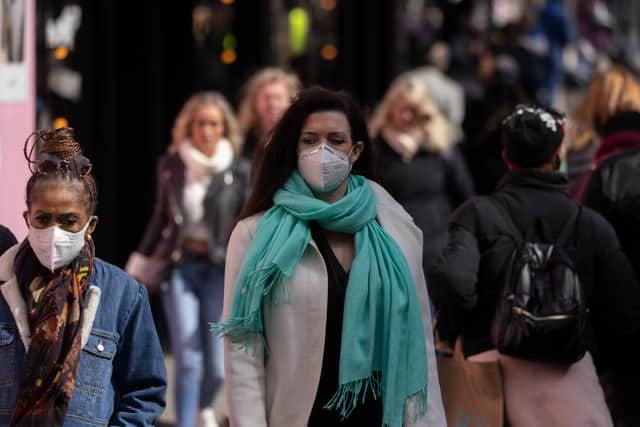What is the R rate? UKHSA to stop publishing Covid-19 R rate data in January
and live on Freeview channel 276
The UK Health Security Agency will stop publishing modelling data on coronavirus from early January. Its chief data scientist Dr Nick Watkins said the publication of this specific data is “no longer necessary” as the country is living with Covid-19 thanks to vaccines and therapeutics.
The R range and growth rate for England had been published weekly during the height of the pandemic, and fortnightly since April this year. It was first published in May 2020 for all of the UK, until April 2021 when it was published for England only.
Advertisement
Hide AdAdvertisement
Hide AdThe UKHSA Epidemiology Modelling Review Group (EMRG) said that, following a detailed review, the next publication of its consensus statement on Covid-19 on 6 January 2023 “will be the last”.
It said Covid-19 incidence data will continue to be accessible from the Office for National Statistics infection survey.
The announcement comes despite Covid infection rates continuing to increase across England and Scotland before Christmas, according to the latest official figures. In England, the estimated number of people testing positive for Covid was 1,197,200, equating to 2.20% of the population. This is a 0.19 percentage point increase on the previous week’s figures when 2.01% were estimated to have the virus. The ONS estimates around 1 in 45 people in England have the virus.
Scotland has also seen an increase in infection rates with 2.49% of the population estimated to have Covid, a jump from 1.91% in the previous week. It is estimated 130,900 people had the virus, or around 1 in 40 people.
Advertisement
Hide AdAdvertisement
Hide AdWhat is the R rate?
R represents the average number of people each Covid-19 positive person goes on to infect. When the figure is above 1, an outbreak can grow exponentially but when it is below 1, it means the epidemic is shrinking.
An R number between 0.8 and 1.1 means that, on average, every 10 people infected will infect between 8 and 11 other people.


Why will it no longer be monitored?
Dr Watkins, chairman of the EMRG, said: “During the pandemic, the R value and growth rate served as a useful and simple indicator to inform public health action and government decisions.
“Now that vaccines and therapeutics have allowed us to move to a phase where we are living with Covid-19, with surveillance scaled down but still closely monitored through a number of different indicators, the publication of this specific data is no longer necessary.
Advertisement
Hide AdAdvertisement
Hide Ad“We continue to monitor Covid-19 activity in a similar way to how we monitor a number of other common illnesses and diseases. All data publications are kept under constant review and this modelling data can be reintroduced promptly if needed, for example, if a new variant of concern was to be identified.”
NationalWorld publishes the weekly data on Covid-19 rates in the UK and will continue to do so as long as it is available.
Comment Guidelines
National World encourages reader discussion on our stories. User feedback, insights and back-and-forth exchanges add a rich layer of context to reporting. Please review our Community Guidelines before commenting.